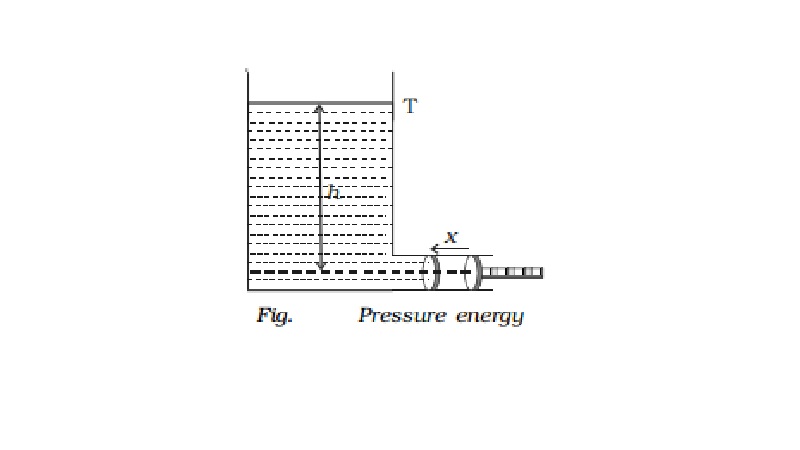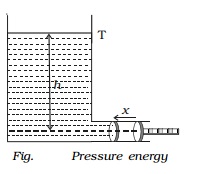Chapter: 11th 12th std standard Class Physics sciense Higher secondary school College Notes
Total energy of a liquid: Pressure, Kineti, Potential energy

Total energy of a liquid
A liquid
in motion possesses pressure energy, kinetic energy and potential energy.
(i) Pressure energy
It is
the energy possessed by a liquid by virtue of its pressure.
Consider
a liquid of density ρ contained in a wide tank T having a side tube near the
bottom of the tank as shown in Fig. . A frictionless piston of cross sectional
area 'a' is fitted to the side tube. Pressure exerted by the liquid on the
piston is P = h ρ g where h is the height of liquid column above the axis of
the side tube.

If x is
the distance through which the piston is pushed inwards, then
Volume
of liquid pushed into the tank = ax
∴
Mass of the liquid pushed into the tank = ax ρ
As the
tank is wide enough and a very small amount of liquid is pushed inside the
tank, the height h and hence the pressure P may be considered as constant.
Work
done in pushing the piston through the distance x = Force on the piston ×
distance moved
(i.e) W
= Pax
This
work done is the pressure energy of the liquid of mass axρ.
∴
Pressure energy per unit mass of the liquid = Pax /axp = P/p
(ii) Kinetic energy
It is
the energy possessed by a liquid by virtue of its motion.
If m is
the mass of the liquid moving with a velocity v, the kinetic energy of the
liquid = ½ mv2
Kinetic
energy per unit mass = 1/2mv2
/ m = v2 / 2
(iii) Potential energy
It is the energy possessed by a liquid by
virtue of its height above the ground level.
If m
is the mass of the liquid at a height h
from the ground level, the potential energy of the liquid = mgh
Potential energy per unit mass = mgh/ m = gh
Total energy of the liquid in motion = pressure energy + kinetic
energy + potential energy.
Total energy per unit mass of the flowing liquid = P/p + v2/2
+ gh
Related Topics